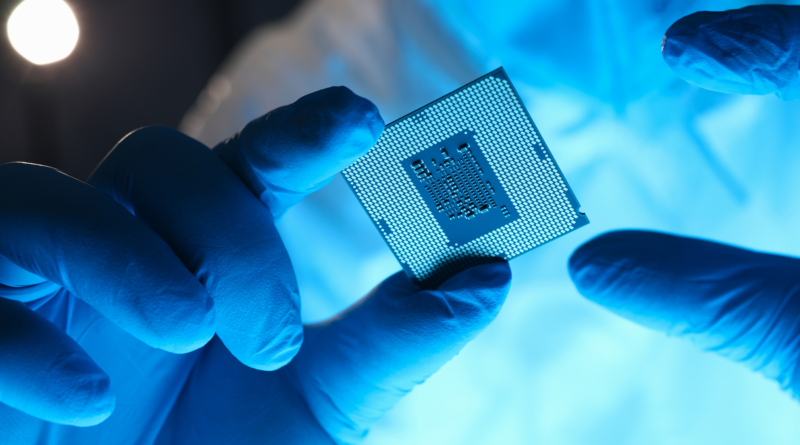Why Lam Research, Applied Materials, and Rambus Rallied Today – The Motley Fool
Founded in 1993, The Motley Fool is a financial services company dedicated to making the world smarter, happier, and richer. The Motley Fool reaches millions of people every month through our premium investing solutions, free guidance and market analysis on Fool.com, top-rated podcasts, and non-profit The Motley Fool Foundation.
Founded in 1993, The Motley Fool is a financial services company dedicated to making the world smarter, happier, and richer. The Motley Fool reaches millions of people every month through our premium investing solutions, free guidance and market analysis on Fool.com, top-rated podcasts, and non-profit The Motley Fool Foundation.
You’re reading a free article with opinions that may differ from The Motley Fool’s Premium Investing Services. Become a Motley Fool member today to get instant access to our top analyst recommendations, in-depth research, investing resources, and more. Learn More
These semiconductor-equipment stocks have had a great year, but Micron's earnings just catapulted them another leg higher.
Shares of semiconductor-equipment stocks Lam Research (LRCX 0.06%) and Applied Materials (AMAT -0.01%), along with memory-interface chipset provider Rambus (RMBS -1.31%), were on the rise Thursday. The stocks had appreciated 3.7%, 3.2%, and 7.2%, respectively, as of 2:30 p.m. ET.
All three stocks were rising along with most of the semiconductor sector in the wake of memory giant Micron‘s (MU 0.67%) blowout earnings report last night. As Lam and Applied are both equipment suppliers to the memory industry, and as Rambus supplies ancillary technology to memory installations, Micron’s earnings also bode well for these companies’ futures over the next one-to-two years at least.
In its earnings report last night, Micron reported revenue of $5.82 billion in revenue, beating expectations by nearly $500 million, with adjusted (non-GAAP) earnings of $0.42 trouncing analyst expectations of a $0.28 loss. Not only that, but Micron guided to $6.6 billion in revenue at the midpoint of the current quarter’s guidance, far higher than the $6 billion expected by analysts. And given that Micron just trounced the high end of the prior-quarter guidance by $300 million, it seems as if it may exceed $7 billion in sales next quarter.
As sharp and harrowing as the memory industry’s 2022 downturn was, it appears the up-cycle may be just as intense. And that’s especially true with the advent of generative AI. Unlike in prior cycles, high-bandwidth memory (HBM) — before only utilized in specialty applications — is now in extremely high demand for training and inference applications.
Having been in a down-cycle and with little capital to spend, Micron and its two large memory peers have all repurposed capital equipment for HBM, which takes much more equipment to produce a wafer compared with other, standard types of memory. So that has actually taken supply away from other memory production for things like smartphones, PCs, and auto and industrial equipment.
The result is that the memory industry is rapidly tightening. Memory pricing, which plunged throughout 2022 and 2023, is now beginning to skyrocket. In the span of just one single quarter, Micron saw average selling prices for DRAM rise in the high-teens, while average selling prices for NAND flash appreciated a whopping 30%.
With Micron getting back to profitability for the first time in six quarters and with more pricing growth apparent on the horizon, the outlook for Micron’s capital spending has just improved. While Micron says it will stick to its prior capex guidance of $7.5 billion to $8.0 billion this fiscal year (ending in August), odds are that 2025 will see significant growth in capital spending. That means more and more purchases of machines from Lam Research and Applied Materials.
While both companies are set for growth, Lam Research may be in an especially fortuitous position, as it has a large share of process steps used in vertical stacking. That’s a key capability for HBM production, as well as production of the most recent, advanced logic chips.
QQQ data by YCharts.
It is tricky investing in semiconductors given how cyclical and volatile the sector is. And that goes doubly true for the memory industry, as the price for memory can either plunge as it did in 2022, or skyrocket as it appears to be doing today. While the memory industry just now appears to be entering a big up-cycle, these associated stocks have also appreciated a lot since late 2022 in anticipation of this scenario unfolding.
However, the generative AI revolution may enable a stronger and longer semiconductor up-cycle than we are used to seeing. And given the severity of the prior, post-pandemic downturn and industrywide supply cutbacks, the upside could be very big indeed.
While many investors trade in and out of the chip sector as they try to time the cycle, semiconductors have actually been the best-performing sector in the market over the past 10 years, even outpacing the technology sector in aggregate.
Therefore, there’s a good case to be made for long-term-oriented investors (especially younger investors) to continue holding or even adding to these top chip stocks at this middle-to-late part of the cycle.
Billy Duberstein has positions in Applied Materials, Lam Research, and Micron Technology. His clients may own shares of the companies mentioned. The Motley Fool has positions in and recommends Applied Materials and Lam Research. The Motley Fool has a disclosure policy.
Invest better with The Motley Fool. Get stock recommendations, portfolio guidance, and more from The Motley Fool’s premium services.
Making the world smarter, happier, and richer.
© 1995 – 2024 The Motley Fool. All rights reserved.
Market data powered by Xignite and Polygon.io.
